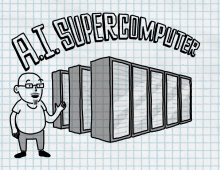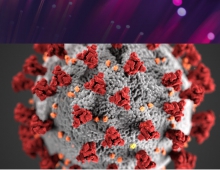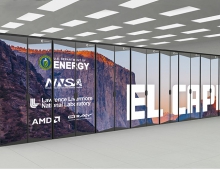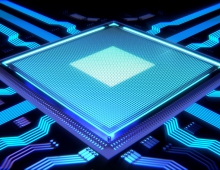
Japan's K Computer Tops The Latest Supercomputer List
Japan's "K Computer" maintained its position atop the newest edition of the TOP500 List of the world's most powerful supercomputers, thanks to a full build-out that makes it four times as powerful as its nearest competitor.
Installed at the RIKEN Advanced Institute for Computational Science (AICS) in Kobe, Japan, the K Computer achieved an impressive 10.51 Petaflop/s on the Linpack benchmark using 705,024 SPARC64 processing cores.
The K Computer is the first supercomputer to achieve a performance level of 10 Petaflop/s, or 10 quadrillion calculations per second. The system has been designed by Fujitsu and uses more than 80,00 ultra-high-speed SPARC 64 VIIIfx processors.
"K" draws upon the Japanese word "Kei" for 1016, representing the system's performance goal of 10 petaflops.
In June 2011, the partially built K computer had taken the No. 1 position with a performance of 8.16 Petaflop/s. Contrary to many other recent very large systems, it does not utilize graphics processors or other accelerators. The K Computer is also one of the most energy efficient systems on the list.
Still in second place is the Chinese Tianhe-1A system with 2.57 Petaflop/s performance. One year ago, the Tianhe-1A system took the top spot, but was dethroned when the next TOP500 list was published six months ago.
In fact, the Top 10 supercomputers on the latest list - the 38th edition of the twice-yearly list - remain unchanged from June 2011. The latest list will be the topic of a Birds-of-a-Feather session to be held at 5:30 p.m. Tuesday, Nov. 15, at the SC11 supercomputing conference in Seattle.
The largest U.S. system is a Cray XT5 system called Jaguar and installed at the Oak Ridge National Laboratory, with a 1.75 Petaflop/s performance running the standard Linpack benchmark application. Other top U.S. systems include Cielo, a Cray XE6 at Los Alamos National Laboratory (No. 6); Pleiades, an SGI Altix machine at NASA's Ames Research Center (No.7); Hopper, a Cray XE6 at the National Energy Research Scientific Computing Center (No. 8); and Roadrunner, an IBM system that was the first ever to break the Petaflop/s barrier, at Los Alamos (No. 10). Systems in China, Japan and France round out the Top 10.
Although the top rankings did not change, the newest list does highlight a number of other developments. For example:
- China keeps increasing its number of systems to 75 and is now clearly the No. 2 country, as a user of HPC, ahead of Japan, UK, France, and Germany.
- The two Chinese systems at No.2 and No. 4 and the Japanese Tsubame 2.0 system at No. 5 are all using NVIDIA GPUs to accelerate computation.
- Thirty-nine systems use GPUs as accelerators (up from 17 six months ago), 35 of these use NVIDIA chips, two use Cell processors, and two use ATI Radeon.
- Already, 62 percent of the systems use processors with six or more cores.
- Intel continues to provide the processors for the largest share (76.8 percent) of TOP500 systems.
- Thanks to the K computer Fujitsu captured the No. 2 spot in market share by total performance slightly ahead of Cray, but IBM stays well ahead of both.
Other points of interest include:
- A total of 384 systems (76.8 percent) are now using Intel processors. This is slightly down from six months ago (386 systems 77.2 percent).
- They are now followed by the AMD Opteron family with 63 systems (12.6 percent), down from 66.
- The share of IBM Power processors has stabilized for now with 49 systems (9.8 percent), up from 45.
- Gigabit Ethernet is still the most-used internal system interconnect technology (223 systems, down from 230 systems), due to its widespread use at industrial customers, followed by InfiniBand technology with 213 systems, up from 208 systems. However, InfiniBand-based systems account for almost twice as much performance (28.7 Petaflop/s) than Gigabit Ethernet ones (14.2 Petaflop/s).
- IBM kept its lead in systems and has now 223 systems (44.6 percent) compared to HP with 140 systems (28.0 percent). HP had 146 systems (29.2 percent) six months ago, compared to IBM with 218 systems (43.6 percent).
Power consumption of supercomputers
TOP500 now tracks actual power consumption of supercomputers in a consistent fashion.
- 29 systems on the list are confirmed to use more than 1 megawatt (MW) of power.
- The No. 1 system, the K computer also reports the highest total power consumption of 12.66 MW. Yet due to its performance, the system is one of the most efficient systems on the list, delivering 830 Mflops/watt.
- The most energy efficient supercomputers are BlueGene/Q with 2,029 Mflops/watt.
- Average power efficiency is 282 Mflops/watt (up from 248 Mflops/watt six months ago and 219 Mflops/watt one year ago).
- Average power consumption of a TOP10 system is 4.56 MW (up from 4.3 MW six months ago) and average power efficiency is 464 Mflops/watt (unchanged).
The TOP500 list is compiled by Hans Meuer of the University of Mannheim, Germany; Erich Strohmaier and Horst Simon of NERSC/Lawrence Berkeley National Laboratory; and Jack Dongarra of the University of Tennessee, Knoxville.
The K Computer is the first supercomputer to achieve a performance level of 10 Petaflop/s, or 10 quadrillion calculations per second. The system has been designed by Fujitsu and uses more than 80,00 ultra-high-speed SPARC 64 VIIIfx processors.
"K" draws upon the Japanese word "Kei" for 1016, representing the system's performance goal of 10 petaflops.
In June 2011, the partially built K computer had taken the No. 1 position with a performance of 8.16 Petaflop/s. Contrary to many other recent very large systems, it does not utilize graphics processors or other accelerators. The K Computer is also one of the most energy efficient systems on the list.
Still in second place is the Chinese Tianhe-1A system with 2.57 Petaflop/s performance. One year ago, the Tianhe-1A system took the top spot, but was dethroned when the next TOP500 list was published six months ago.
In fact, the Top 10 supercomputers on the latest list - the 38th edition of the twice-yearly list - remain unchanged from June 2011. The latest list will be the topic of a Birds-of-a-Feather session to be held at 5:30 p.m. Tuesday, Nov. 15, at the SC11 supercomputing conference in Seattle.
The largest U.S. system is a Cray XT5 system called Jaguar and installed at the Oak Ridge National Laboratory, with a 1.75 Petaflop/s performance running the standard Linpack benchmark application. Other top U.S. systems include Cielo, a Cray XE6 at Los Alamos National Laboratory (No. 6); Pleiades, an SGI Altix machine at NASA's Ames Research Center (No.7); Hopper, a Cray XE6 at the National Energy Research Scientific Computing Center (No. 8); and Roadrunner, an IBM system that was the first ever to break the Petaflop/s barrier, at Los Alamos (No. 10). Systems in China, Japan and France round out the Top 10.
Although the top rankings did not change, the newest list does highlight a number of other developments. For example:
- China keeps increasing its number of systems to 75 and is now clearly the No. 2 country, as a user of HPC, ahead of Japan, UK, France, and Germany.
- The two Chinese systems at No.2 and No. 4 and the Japanese Tsubame 2.0 system at No. 5 are all using NVIDIA GPUs to accelerate computation.
- Thirty-nine systems use GPUs as accelerators (up from 17 six months ago), 35 of these use NVIDIA chips, two use Cell processors, and two use ATI Radeon.
- Already, 62 percent of the systems use processors with six or more cores.
- Intel continues to provide the processors for the largest share (76.8 percent) of TOP500 systems.
- Thanks to the K computer Fujitsu captured the No. 2 spot in market share by total performance slightly ahead of Cray, but IBM stays well ahead of both.
Other points of interest include:
- A total of 384 systems (76.8 percent) are now using Intel processors. This is slightly down from six months ago (386 systems 77.2 percent).
- They are now followed by the AMD Opteron family with 63 systems (12.6 percent), down from 66.
- The share of IBM Power processors has stabilized for now with 49 systems (9.8 percent), up from 45.
- Gigabit Ethernet is still the most-used internal system interconnect technology (223 systems, down from 230 systems), due to its widespread use at industrial customers, followed by InfiniBand technology with 213 systems, up from 208 systems. However, InfiniBand-based systems account for almost twice as much performance (28.7 Petaflop/s) than Gigabit Ethernet ones (14.2 Petaflop/s).
- IBM kept its lead in systems and has now 223 systems (44.6 percent) compared to HP with 140 systems (28.0 percent). HP had 146 systems (29.2 percent) six months ago, compared to IBM with 218 systems (43.6 percent).
Power consumption of supercomputers
TOP500 now tracks actual power consumption of supercomputers in a consistent fashion.
- 29 systems on the list are confirmed to use more than 1 megawatt (MW) of power.
- The No. 1 system, the K computer also reports the highest total power consumption of 12.66 MW. Yet due to its performance, the system is one of the most efficient systems on the list, delivering 830 Mflops/watt.
- The most energy efficient supercomputers are BlueGene/Q with 2,029 Mflops/watt.
- Average power efficiency is 282 Mflops/watt (up from 248 Mflops/watt six months ago and 219 Mflops/watt one year ago).
- Average power consumption of a TOP10 system is 4.56 MW (up from 4.3 MW six months ago) and average power efficiency is 464 Mflops/watt (unchanged).
The TOP500 list is compiled by Hans Meuer of the University of Mannheim, Germany; Erich Strohmaier and Horst Simon of NERSC/Lawrence Berkeley National Laboratory; and Jack Dongarra of the University of Tennessee, Knoxville.



















